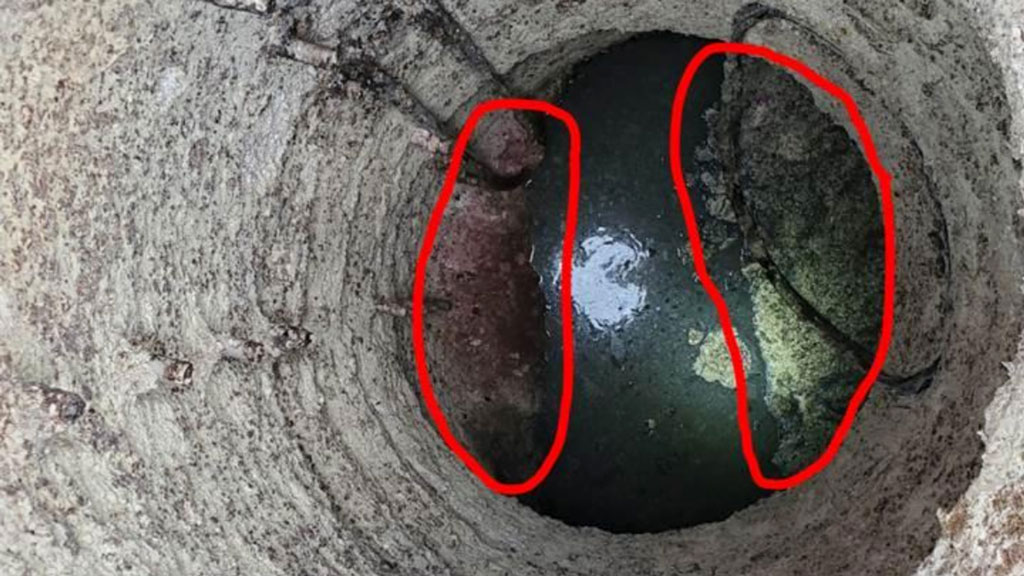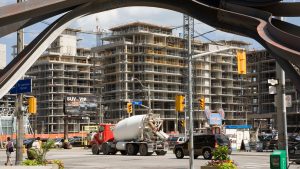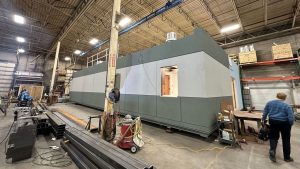No, it’s not the edible kind. But one recipe for turning concrete into a “mashed potatoes” consistency is by combining different types of sewer effluent.
Such was the case in Windsor, Ont.’s west end industrial area, home to a variety of companies from food processors to steel manufacturers, warehousing and even the new Gordie Howe International Bridge now under construction.
Earlier this year a City of Windsor parks official doing the rounds noticed a couple of sinkholes along the four-lane Ojibway Parkway, a commuter route near the Detroit River running into central Windsor.
“Our maintenance department was called in to investigate,” explained Andrew Lewis, a City of Windsor right of way and field services co-ordinator. “It was at that point that we realized that there were some issues with the existing concrete pipe in the ground and the manholes.”
The issues were the waste from a food processing plant comingling with heavy industrial discharge creating, Lewis said, a “perfect storm” and resulting in the creation of hydrogen sulfide gas.
“And hydrogen sulfide gas and concrete don’t usually mix well together,” he said.
That resulted in the concrete line and adjacent manhole’s 20-year-old concrete walls turning to the “mashed potato” mush and causing the sinkholes. That pipe had only been installed in 2001 “so we only got 20 years out of it,” Lewis noted.
Hydrogen sulfide also gives off that rotten egg smell, which had been noticed occasionally in the area recently.
Lewis said all the sewer’s users are monitored for their discharges and “all were within” their limits. So “it’s not as if a certain industry is putting a certain thing in that’s causing this,” he added. “It’s just that this was the byproduct of their discharges.”
Meanwhile, a short-term work around with mobile pumps and hoses are currently transporting the effluent above ground around the deteriorated pipes, on its way to the nearby west side trunk line and Lou Romano Water Reclamation Plant, about a kilometre away.
A consultant, Ontario-based Andrews.engineer was called in by the city and concluded that 1,100 metres of pipe varying in diameter from 675 to 975 millimetres simply had to be rehabilitated. And the most effective and economical way to do it was to use the plastic Cured in Place Pipe (CIPP) technique. The trenchless method uses the existing concrete pipe, with the felt type polyester inserted and filled with resin. Hot water or steam is then used to “cure” it within the existing deteriorating concrete pipe and form essentially new pipe replacement.
“The resin changes to the plastic,” Lewis said.
The $3 million project, funds for which the city quickly advanced because of the critical industrial area served by the line, will be undertaken in the new year and last until summer. The contractor is Ottawa-based Clean Water Works. There are also 21 manholes that will get a similar do over though with a spray-on relining.
“It’s not per se that the concrete is all going to immediately fail but if the hydrogen sulfide gas continues to react with the concrete it’s not going to get any better,” Lewis said. “So, we need to isolate the concrete from the gas and by doing that it will not allow the hydrogen sulfide to mix with the concrete anymore.”
While pipe replacement will be trenchless it’s possible there could be minor excavation.
“The potential is there if there is a problem then there has to be excavation to repair,” the official said.











Please understand that the hydrogen sulfide gas is not the problem. It is a fuel that feeds the problem. There is more to this science. This is a biological problem. ASTM International recently published ASTM C1894-19, a guide to explain this. Also, in 2020, ASTM International Committee C13 issued two test methods for testing concrete exposed to chemical and biological acids (C1898 and C1904). Please contact me if you have questions about Microbially Induced Corrosion of Concrete or MICC.